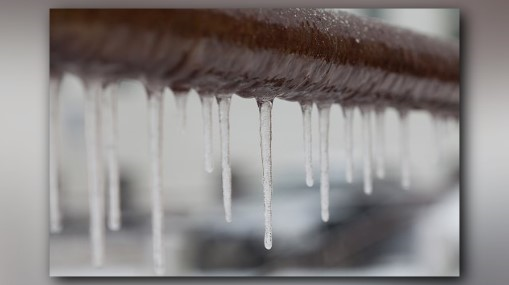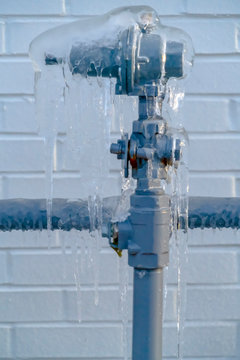How to Prevent Frozen Plumbing in Winter: Professional Tips
How to Prevent Frozen Plumbing in Winter: Professional Tips
Blog Article
Do you find yourself in search of tips involving Winter Plumbing Precautions: Preventing Frozen Pipes?

Winter can wreak havoc on your plumbing, especially by freezing pipelines. Below's exactly how to avoid it from taking place and what to do if it does.
Intro
As temperature levels decline, the threat of icy pipelines increases, potentially leading to expensive fixings and water damage. Recognizing exactly how to stop icy pipes is critical for home owners in chilly climates.
Recognizing Frozen Pipelines
What triggers pipes to freeze?
Pipes freeze when exposed to temperature levels listed below 32 ° F (0 ° C) for expanded durations. As water inside the pipes ices up, it increases, taxing the pipe walls and possibly creating them to break.
Threats and problems
Icy pipes can result in water system disturbances, residential or commercial property damages, and costly repairs. Burst pipes can flood homes and cause extensive architectural damages.
Indications of Frozen Pipes
Identifying frozen pipes early can prevent them from breaking.
Exactly how to determine frozen pipes
Look for lowered water flow from faucets, uncommon odors or sounds from pipes, and noticeable frost on subjected pipelines.
Prevention Tips
Insulating prone pipelines
Wrap pipes in insulation sleeves or make use of warmth tape to shield them from freezing temperature levels. Focus on pipes in unheated or exterior areas of the home.
Heating techniques
Maintain indoor spaces effectively heated up, especially locations with pipes. Open cabinet doors to enable warm air to distribute around pipelines under sinks.
Safeguarding Outside Pipes
Yard hose pipes and outdoor faucets
Detach and drain yard hoses prior to winter. Set up frost-proof faucets or cover outside taps with protected caps.
What to Do If Your Pipelines Freeze
Immediate activities to take
If you believe icy pipes, keep faucets open to ease pressure as the ice thaws. Utilize a hairdryer or towels taken in warm water to thaw pipelines gradually.
Long-Term Solutions
Structural modifications
Consider rerouting pipes far from outside wall surfaces or unheated locations. Include extra insulation to attics, cellars, and crawl spaces.
Upgrading insulation
Buy high-quality insulation for pipelines, attic rooms, and wall surfaces. Correct insulation assists preserve consistent temperature levels and lowers the danger of frozen pipes.
Verdict
Protecting against icy pipes needs positive actions and quick actions. By comprehending the causes, indicators, and safety nets, house owners can protect their pipes during cold weather.
5 Ways to Prevent Frozen Pipes
Drain Outdoor Faucets and Disconnect Hoses
First, close the shut-off valve that controls the flow of water in the pipe to your outdoor faucet. Then, head outside to disconnect and drain your hose and open the outdoor faucet to allow the water to completely drain out of the line. Turn off the faucet when done. Finally, head back to the shut-off valve and drain the remaining water inside the pipe into a bucket or container. Additionally, if you have a home irrigation system, you should consider hiring an expert to clear the system of water each year.
Insulate Pipes
One of the best and most cost-effective methods for preventing frozen water pipes is to wrap your pipes with insulation. This is especially important for areas in your home that aren’t exposed to heat, such as an attic. We suggest using foam sleeves, which can typically be found at your local hardware store.
Keep Heat Running at 65
Your pipes are located inside your walls, and the temperature there is much colder than the rest of the house. To prevent your pipes from freezing, The Insurance Information Institute suggests that you keep your home heated to at least 65 degrees, even when traveling. You may want to invest in smart devices that can keep an eye on the temperature in your home while you’re away.
Leave Water Dripping
Moving water — even a small trickle — can prevent ice from forming inside your pipes. When freezing temps are imminent, start a drip of water from all faucets that serve exposed pipes. Leaving a few faucets running will also help relieve pressure inside the pipes and help prevent a rupture if the water inside freezes.
Open Cupboard Doors
Warm your kitchen and bathroom pipes by opening cupboards and vanities. You should also leave your interior doors ajar to help warm air circulate evenly throughout your home.

Hopefully you enjoyed our excerpt on How to prepare your home plumbing for winter weather. Thank you for taking a few minutes to read our posting. Are you aware of somebody who is curious about How To Avoid Freezing Pipes? Feel free to share it. I cherish reading our article about Prevent Frozen Pipes .
Click Here Report this page